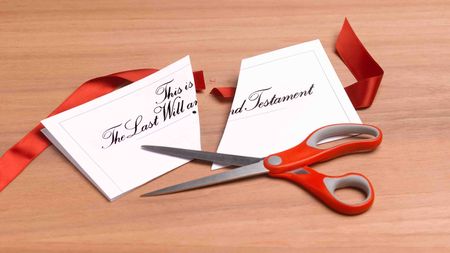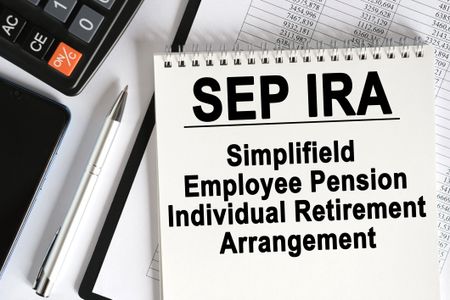Make Your Money Last
To make sure your retirement nest egg goes the distance, you need growth as well as income. Rule number one: Don't dump stocks.


In 2007, after teaching math for 34 years at a private school in the Washington, D.C., area, Bob Long was ready to hang up his teaching career and head into a new stage of life. He spent a few months training his successor as head of the math department and, in December, retired at the relatively young age of 61. Bob's wife, Margaret (then 56), had retired a few months earlier from her job in the mortgage industry. The couple were eager to kick back in their new home, in Ocean Pines, Md.
Their timing couldn't have been worse. The stock market entered a downward spiral just as the Longs were tapping into their retirement savings. They expected their money to last well into their nineties, based on retirement calculators, so they were rattled to see their balance shrink so quickly. "I'm a mathematician," says Bob. "I learned early on that average returns are nice for the long term, but you do not want to see a drop in the market immediately after retiring." At one point, he estimates, their portfolio was down 25% from its preretirement balance.
If their timing was all wrong, their response was just about perfect. Rather than bail out of stocks in a down market, they stayed the course (and stopped looking at their brokerage statements). They were conservative in the amounts they took from their retirement accounts. And they dipped back into the workforce. Bob returned to the classroom as a substitute teacher, and both he and Margaret took short-term jobs at the Census Bureau—for fun and pocket money.

Sign up for Kiplinger’s Free E-Newsletters
Profit and prosper with the best of expert advice on investing, taxes, retirement, personal finance and more - straight to your e-mail.
Profit and prosper with the best of expert advice - straight to your e-mail.
The Longs' restrained approach was rewarded when the market and their nest egg began to rebound after March 2009. But they (and other retirees) can't be guaranteed they won't face future challenges. "A lot can change over 30 years," says David Blanchett, head of retirement research at Morningstar Investment Management, an investment consulting branch of Morningstar. "The key is to think about where you are now and where you want to be in the future"—and adjust accordingly.
Don't dump stocks
At 65, you'd think you could stop worrying about building your retirement stash and focus on preserving it. But with today's longer life expectancies (a 65-year-old man can expect to live until 84, on average, and a 65-year-old woman can expect to live until age 86), "you have to take on some level of risk if you want to keep up with and beat inflation," says Nate Wenner, a certified financial planner in Edina, Minn.
To keep the growth engine running, financial planners generally recommend that you have 40% to 60% in stocks at the start of your retirement, with the rest in cash and fixed-income investments to tamp down risk. A more conservative investor might start with 30% in stocks and 70% in fixed-income investments; aggressive investors would reverse it to 70% and 30%.
How you invest within those parameters gets tricky, says Blanchett, given that bond yields remain low by historical standards (recently 2.6% for the ten-year Treasury bond, for example) and stock prices may be topping out. Aim for a diversified portfolio that includes U.S. and international stock funds, an emerging-markets stock fund and a dash of real estate and commodities. On the bond side, given the low-interest-rate environment, go with short-term bonds, floating-rate bank loan funds and high-yield bond funds (see our suggested portfolio below).
As you get further into retirement, gradually reduce risk by shifting to more bonds and cash. Some investors feel comfortable allocating 30% to stocks even in their advanced old age; others end up with 10% to 15% in stocks and the rest in cash and fixed investments. Only the most conservative investors get out of stocks altogether, says Maria Bruno, a senior investment analyst at Vanguard, and those investors "are very rare."
Making the adjustments yourself can be a bother; instead, consider putting your money in a target-date fund (if you haven't already), which adjusts the mix for you. Be aware that funds have different asset mixes and different timetables for adjusting them, called glide paths (see Pick the Best Target-Date Fund for You). For instance, the Vanguard 2015 fund, aimed at people retiring between 2013 and 2017, invests 50% in stocks and 50% in bonds that year and moves to 30% stocks and 70% bonds over seven years. A comparable fund from Fidelity has you start retirement in 2015 with 50% in stocks, 40% in bonds and 10% in short-term funds and moves to 20% stocks with the rest in bonds and short-term funds over ten to 15 years.
Another strategy is to carve out part of the money you would otherwise put in bonds to buy an immediate fixed annuity, which delivers a guaranteed income for as long as you live. "If you buy an annuity with 30% to 40% of your savings, that's the bond part of your portfolio. Then you can go all in with stocks for the rest," says Steve Vernon, author of Money for Life (Rest-of-Life Communications). Low interest rates are dampening the income you can generate with a single-premium immediate annuity—the meat and potatoes of the annuities world—but there are ways to boost the payouts, such as laddering or buying a deferred-income annuity (see Add an Annuity to Your Retirement-Income Mix).
Smart distribution of your assets is only part of the challenge. You also need to adopt a strategy to make your income last for the rest of your life. Many retirees aim to replace 80% of their preretirement income, but it's a good idea to create a budget and test-drive it before you quit your day job (see Countdown to Retirement: Test-Drive Your Budget). If you can't get by with Social Security, a pension and savings, consider tapping your home equity through a reverse mortgage (see Fill the Gaps in Your Retirement Income).
Live off your interest
One obvious way to ensure you won't run your portfolio dry is to siphon off the interest, dividends and perhaps the capital gains on your investments and preserve the principal. At current interest rates, you'd need a hefty amount plus a decent guaranteed income to generate a respectable paycheck. A million dollars in a balanced fund or a balanced portfolio with a 3% annual payout ($30,000) plus a Social Security benefit of $2,000 a month (for one person) gives you $54,000 annually. If you're married and you and your spouse each get $2,000 a month in Social Security, you'd have an annual income of $78,000.
If you're accustomed to a more lavish lifestyle, that may not be enough, especially considering taxes (for tax-efficient ways to tap your accounts, see How to Lessen the Tax Bite in Retirement). You could supplement the amount by working part-time for the first few years of retirement, postponing the point at which you draw down your principal—at least until you have to take required minimum distributions. The longer you wait to tap your nest egg, the shorter your time horizon becomes and the less likely your money will run out. Better yet, work a little longer and delay taking Social Security until you hit 70. Your benefit will earn 8% a year in delayed retirement credits from age 66 to age 70. (To learn more, read Strategies to Boost Your Social Security).
[page break]
Rethink the 4% rule
For the past two decades, some financial planners have used 4% as a benchmark for how much you can withdraw from your retirement assets and be reasonably assured of not running out of money after 30 years. According to this rule, you would take 4% of your total portfolio in the first year of your retirement and increase the amount each year by the rate of inflation. The benchmark, developed in 1994 by William Bengen, was based on average returns over overlapping 30-year periods, using a model portfolio with a 50% allocation to stocks and 50% to bonds.
But historical averages don't necessarily reflect the conditions you face out of the starting gate, and those conditions can have a disproportionate effect on where you end up. If you start taking distributions from your portfolio at the beginning of a bear market and follow the 4% rule, you could face a higher risk of running out of money after 30 years than if you start tapping your money when the market is healthy, says Martin Schmidt, an adviser at the Institutional Retirement Income Council.
Low interest rates, which are expected to last for at least several more years, make for another game changer. "The returns you earn at retirement are really important to your strategy," says Blanchett. If you buy a ten-year government bond today, he says, you get 2.6%. That's about three percentage points below the long-term average. "If rates go back to the long-term average, you could be stuck holding a bond paying 2.6% over its lifetime."
Blanchett and other financial planners suggest that a withdrawal rate of 3% or even 2.5% (with an inflation adjustment) under today's conditions is a safer bet for a 30-year retirement run, but they also agree that a little common sense is in order. Rather than stick to a rigid formula, lower your payout (or skip the inflation adjustment, as the Longs did) when market conditions are against you. Then take it up a notch when your investments are thriving. Blanchett says he still thinks that 4% is an excellent starting point, but to get there requires more active decision-making than it once did. "Historically, it was easy—a slam-dunk. Not so much today."
Let the IRS do the math
For a different approach, you could take your cue from Uncle Sam and calculate your withdrawals based on the actuarial tables the IRS uses for required minimum distributions (which you have to take anyway from tax-deferred accounts starting at age 70½). This method has you start with a minimum payout rate of 3.76%; the percentage goes up each year. (The IRS life-expectancy tables for a 70-year-old man use an average life expectancy almost twice as long as the one actuaries at Social Security use.)
Here's an example from Vanguard. Say you're 70½ and you have $500,000 in your IRA. Your first distribution would be about $18,800. If your account grows at a 3% real rate of return, by age 89 you'd withdraw about $26,382 in current dollars that year. But there's a catch: At age 90, your purchasing power starts to creep back down. "The question is whether the RMD strategy triggers a drop in the standard of living for someone who lives into his or her nineties," says Vanguard's Bruno.
Add to that the risk that the RMD formula might cause you to take too big a bite out of your savings during a market decline and you'll see that the system, though convenient, is not risk-free, adds Bruno.
Use the bucket system
Another way to hedge your bets against market downturns and other unpleasant events is to position your money in various buckets. With this system, you invest enough money in liquid, conservative accounts to cover several years' worth of basic costs and the rest in short- and intermediate-term bonds and growth-oriented investments, such as stock funds.
To set it up, calculate how much of your essential expenses you can cover with guaranteed income, such as Social Security and pensions. Put enough money to cover the rest of your expenses for several years into safe investments, such as money market funds and short-term CDs. Use a second bucket for discretionary expenses, such as travel, putting that money into short- and intermediate-term bonds. (With current interest rates, you won't get much additional yield over the first bucket, but that will change as rates go up.) The remainder would go into a third bucket, a mix of stock and bond funds. You replenish the first two buckets by rebalancing and taking profits from the third.
Or use just two buckets, one to cover expenses and the second to nurture growth. Patrick Horan, of Horan Capital Management, in Hunt Valley, Md., encourages his clients to set aside three to five years' worth of expenses in cash and supersafe investments and put the balance—up to 80% of their portfolio—in what he deems to be undervalued stocks. When the stocks hit his assessment of fair value, he sells, using the money to replenish the first bucket. "Most people don't accumulate wealth because they're not taking advantage of growth over time," says Horan.
An annuity also works with the two-bucket strategy: You use the income from an immediate annuity plus Social Security and any pensions to cover your fixed expenses and let your growth investments ride. You'll hedge your bets even further by buying an inflation-adjusted annuity, although you'll receive a lower initial payout.
The bucket strategy does present a couple of problems: Unless you rely solely on guaranteed income, your portfolio will become increasingly conservative as you sell stocks to replenish the first bucket, skewing the mix, says Tracy Burke, a certified financial planner in Harrisburg, Pa. "At some point, you end up with one big bucket." Also, you may be forced to sell stocks at a bad time, depending on when you need to refill the bucket used for basic expenses. And your bucket strategy may compete with your tax strategy (see How to Lessen the Tax Bite in Retirement). If you decide to use this strategy, consult a financial adviser. In fact, that's good advice to follow before you settle on any arrangement.
So how are the Longs faring, six years after retiring into that disastrous bear market? Quite nicely. Other than an occasional return to the classroom for Bob, the couple are now fully retired. Not only are they enjoying a more leisurely existence (including crafts for her, golf for him), but Bob is back to checking his investments regularly. "Right now, I can keep an eye on the stock market every day. I'm a numbers guy. I'll look just for the fun of it. That uncertain feeling of 2008 and 2009—we don't have that anymore."
Haven't yet filed for Social Security? Create a personalized strategy to maximize your lifetime income from Social Security. Order Kiplinger’s Social Security Solutions today.
Get Kiplinger Today newsletter — free
Profit and prosper with the best of Kiplinger's advice on investing, taxes, retirement, personal finance and much more. Delivered daily. Enter your email in the box and click Sign Me Up.

-
 Stock Market Today: Stocks Are Mixed Before Liberation Day
Stock Market Today: Stocks Are Mixed Before Liberation DayMarkets look forward to what comes with the reordering of 80-year-old global trade relationships.
By David Dittman Published
-
 Stagflation: What It Is and Why Retirees Should Care
Stagflation: What It Is and Why Retirees Should CareStagflation — the economic bogeyman of the 1970's — may return to the US. Here's what it could mean to your retirement.
By Donna Fuscaldo Published
-
 What Does Medicare Not Cover? Eight Things You Should Know
What Does Medicare Not Cover? Eight Things You Should KnowHealthy Living on a Budget Medicare Part A and Part B leave gaps in your healthcare coverage. But Medicare Advantage has problems, too.
By Donna LeValley Published
-
 15 Reasons You'll Regret an RV in Retirement
15 Reasons You'll Regret an RV in RetirementMaking Your Money Last Here's why you might regret an RV in retirement. RV-savvy retirees talk about the downsides of spending retirement in a motorhome, travel trailer, fifth wheel or other recreational vehicle.
By Bob Niedt Published
-
 457 Plan Contribution Limits for 2025
457 Plan Contribution Limits for 2025Retirement plans There are higher 457 plan contribution limits for state and local government workers in 2025. That's good news for state and local government employees
By Kathryn Pomroy Last updated
-
 13 Smart Estate Planning Moves
13 Smart Estate Planning Movesretirement Follow this estate planning checklist for you (and your heirs) to hold on to more of your hard-earned money.
By Janet Kidd Stewart Last updated
-
 Medicare Basics: 11 Things You Need to Know
Medicare Basics: 11 Things You Need to KnowMedicare There's Medicare Part A, Part B, Part D, Medigap plans, Medicare Advantage plans and so on. We sort out the confusion about signing up for Medicare — and much more.
By Catherine Siskos Last updated
-
 The Seven Worst Assets to Leave Your Kids or Grandkids
The Seven Worst Assets to Leave Your Kids or Grandkidsinheritance Leaving these assets to your loved ones may be more trouble than it’s worth. Here's how to avoid adding to their grief after you're gone.
By David Rodeck Last updated
-
 SEP IRA Contribution Limits for 2025
SEP IRA Contribution Limits for 2025SEP IRA A good option for small business owners, SEP IRAs allow individual annual contributions of as much as $69,000 in 2024 and $70,000 in 2025..
By Jackie Stewart Last updated
-
 Roth IRA Contribution Limits for 2025
Roth IRA Contribution Limits for 2025Roth IRAs Roth IRA contribution limits have gone up. Here's what you need to know.
By Jackie Stewart Last updated